If you deleted your files permanently on Windows for whatever reason and are looking for ways to recover them. Then this article shows you how to recover permanently deleted files from Windows.
However, some of the solutions mentioned in this article might or might not work.
You can always count on the Remo File Recovery tool to get permanently deleted files back easily.
Losing some of your crucial files forever can give you sleepless nights. Worry not!!! You have ended up in the right place. This write-up talks about various reasons why you might permanently delete your files. As well as explains in detail various ways of recovering those files that are gone forever.
Table of Contents:
You might get rid of files from your system permanently due to any of the following reasons.
Now that you know all the possible reasons behind the permanent deletion of the files.
At this stage, you might have the following questions in your mind.
- How to find Permanently Deleted files on Windows?
- Can we Restore Permanently Deleted Files?
- Any way to Recover Permanently Deleted Files?
- How to Recover Recently Permanently Deleted Files?
Keep reading this article to find out the answers to those questions.
The files you deleted permanently are no longer readily available in your Windows system. However, those files still reside in the internal drive of your system. It’s just that the operating system marks the space as empty and ready to be used.
You must be wondering, If you cannot view the permanently deleted files with the naked human eye, then how can I undelete permanently deleted files?
So, as far as the question about finding or accessing the files which are gone forever is concerned, you need to use a specialized permanently deleted file recovery software. One of them is the Remo File Recovery tool, a rigorously built tool that is meticulously tested under 1000+ data loss scenarios to help you recover files from Windows.
Or the next option is to use backup copies of the files, which are deleted forever. You might have saved copies of original files in any external storage device or in the Cloud.
The third option is to use free tools like Microsoft Windows File Recovery Tool. However, the tool has its own share of limitations, such as the utility being only available for Windows 10 and other newer versions, it’s a command line utility, the minimal user-friendly interface, etc.
In almost all cases, the answer is almost definitely “Yes” as long as you have not saved any new files in the same space where the deleted files were originally residing.
That’s why the first step in the permanently deleted file recovery process is to stop using the drive immediately and then try restoring those files that you think are gone forever.

Source: Reddit
Here are some solutions that can help you recover permanently deleted files. As mentioned earlier, you need to have a backup of the files that are deleted permanently. We recommend trying any of the top four solutions below if you have a backup. I recommend you try Microsoft’s File Recovery tool if you don't have a backup.
But if you do not have any backup or don’t want to use any of Microsoft’s file recovery tool, or you don’t want to go through the annoying and tedious process of manually recovering permanently deleted files. Then, we recommend you try the Remo File Recovery tool.
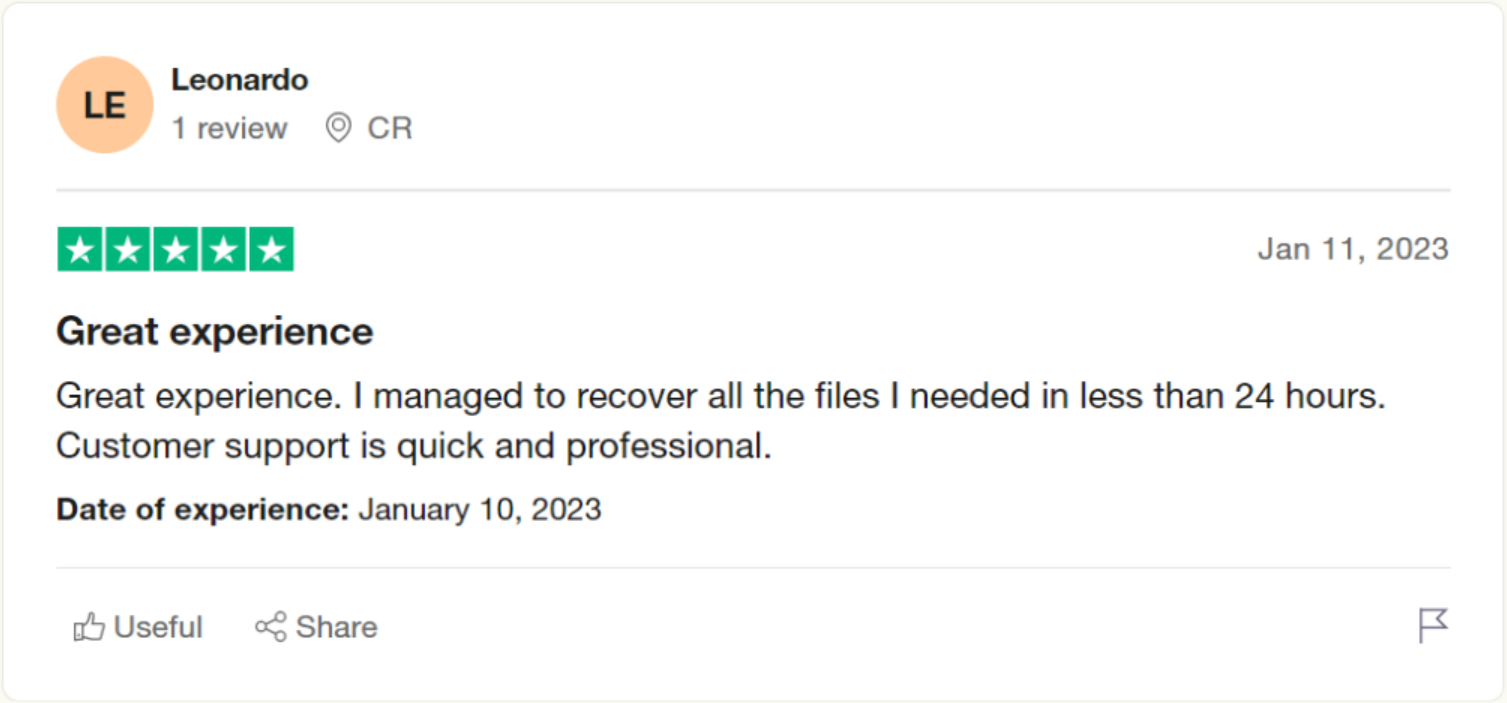
Source: Trustpilot
One of the simplest ways to get back your permanently deleted or files which are lost forever is by restoring them from backup.
Data backups are a great way to ensure you never lose your important files. If you have taken a backup of your crucial files and folders and saved it on any external storage drive such as an external hard drive, SSD, Pendrive, or any other device. Then follow the steps explained below to restore and use the backup copies of the original files that were deleted permanently.
There are two ways to do it:
How To Use File History Option To Restore Backup Files From The External Drive?
Step 1: Connect the Drive to your System.
Step 2: Go to the Control Panel , find and click on the Save backup copies of your files with the File History option and follow the on-screen instructions.
Or else you can also just copy and paste the files from the external drive to the local drive.
Refer to this article to learn how to recover files lost during cut and paste.
Many Windows users use the Cloud to store some of their vital files. If you are one of those who have stored a copy of files in Google Drive or OneDrive. Then follow the below-mentioned steps to find out how to download the files.
Restore Saved Files on OneDrive
1. Sign in to your OneDrive account with your Microsoft ID and Password.
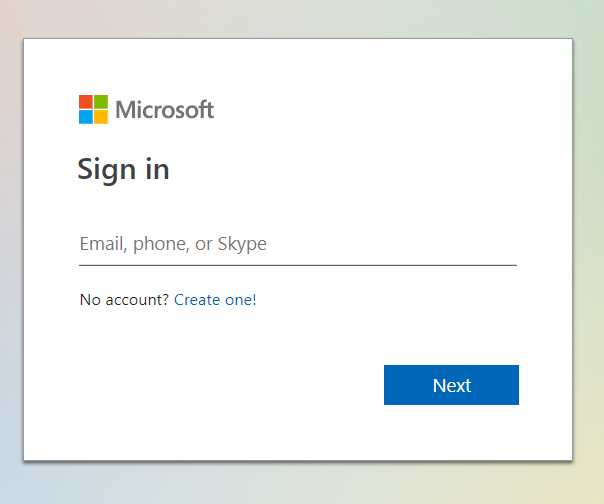
2. A list of all files that were saved on the OneDrive will appear on your screen.
3. From the list select the file(s) you want to restore. Once done click on the Download button located on the toolbar.
Restore Files Saved on Google Drive
1. Sign in to your Google Drive using your Google Account
2. A complete catalog of all files and folder saved on the Drive will get displayed on your screen.
3. Select the copies of original files which are gone forever.
4. Click on the More actions option, and click on Download option.
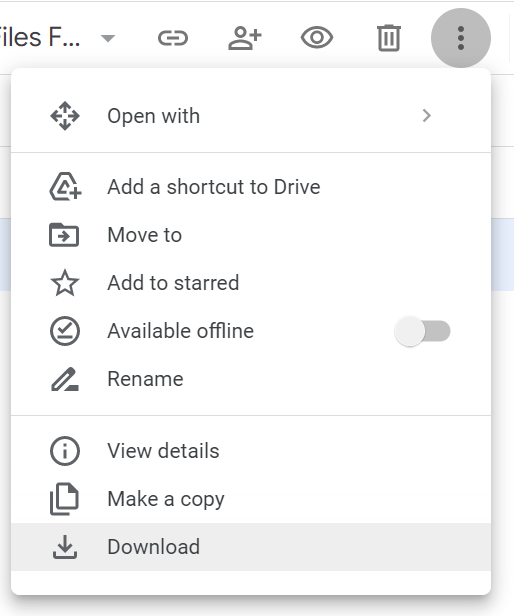
5. The selected files will get downloaded on your system and are available in the Downloads folder.
6. Unzip those files and choose a location to save those downloaded files.
If you are not using OneDrive or Google Drive. Then we suggest you try any good data recovery tool to recover files that were deleted permanently. Scroll down to find out more about that.
If you have accidentally deleted some of the files from the Downloads folder, then follow the methods mentioned in this article to recover deleted files from the Downloads Folder.
If you have set up restore points. You can utilize the Previous Version feature to restore the old version of permanently deleted files.
1. Navigate to the folder from where you have deleted files permanently.
2. Right-click and from the menu click on the Properties option.
3. Click on the Previous Versions tab.
4. All restore points will get displayed on your screen.
5. Click on any restore point and hit the Restore button.
That’s it. The deleted files' old version will be restored in the exact location.
File History is a free backup utility that lets Windows users take a backup of important files saved in the Music, Photos, Videos, and Documents folder.
1. Type in File History option in the Search bar of your Windows system.
2. Find and click on Restore your files with the File History option.
3. Navigate to the folder, from where you have deleted the saved files permanently.
4. Use the arrow buttons to change the restore points.
5. Select the backup point, prior to permanently deleting those files and hit the Green Restore button.
If you don’t have a backup saved on any external device, those files were never saved in the Cloud, or if you have not set restore points or activated the File History option. Then worry not! This is where tools like Remo File Recovery come to your rescue.
Microsoft has released its own file recovery tool for Windows 10 and other newer versions called Microsoft Windows File Recovery. The tool lets Windows users recover deleted files or folders for free.
However, the tool also comes with its own fair share of drawbacks, such as-
- It’s a command line utility, not a graphical interface
- Most Windows users experienced great difficulty in using this tool
- The reliability of this solution is also not very convincing.
But if you want to give this solution a shot. You can follow the below-mentioned steps.
1. Download the Microsoft Windows File Recovery tool from the Microsoft Store.
2. Launch the tool and when prompted to give the application the permission to modify your system, click on the Yes button.
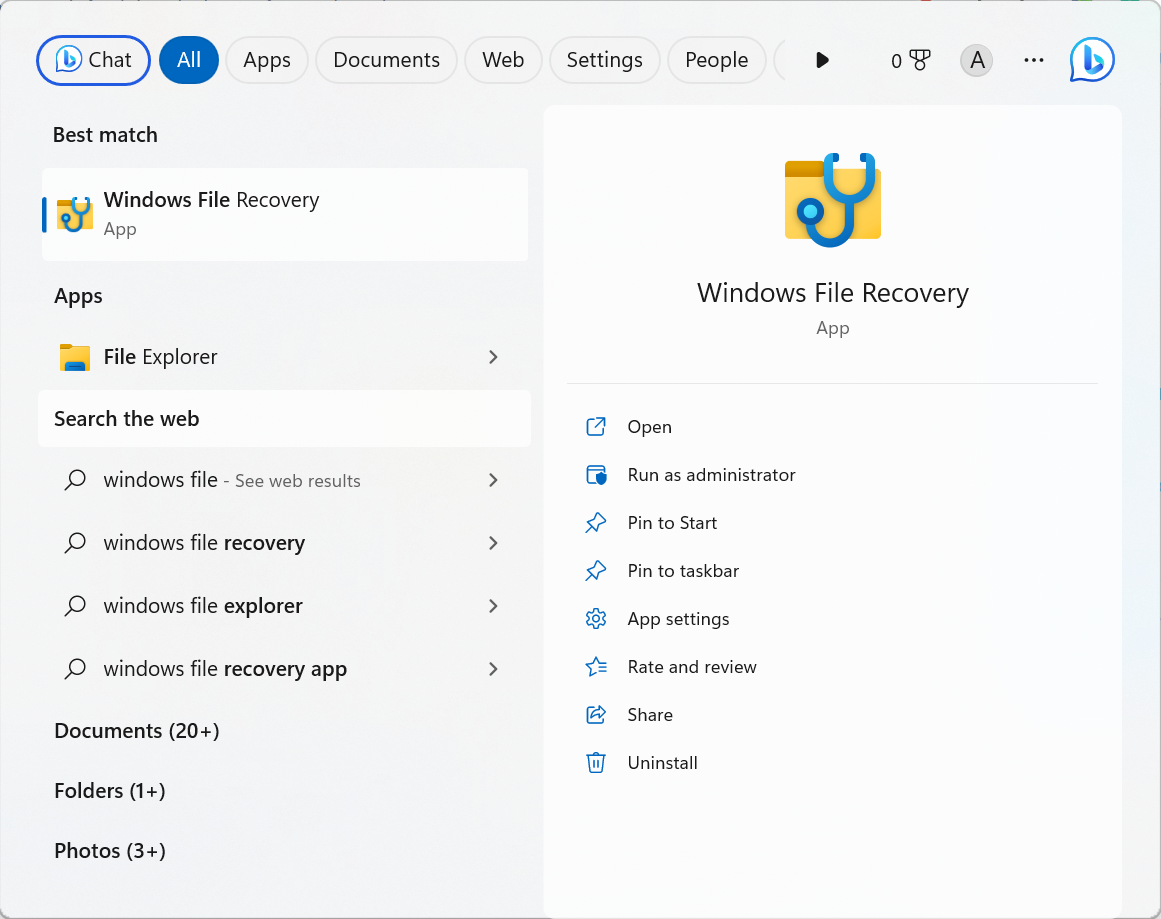
3. Enter the winfr destination-drive: source-drive: [/mode] [/switches] command when you are in the command prompt screen.
4. You are now asked to choose any one of the following data recovery modes:
- Go with Regular Mode when you want to recover data from basic data loss situations
- And Extensive Mode to recover files from complex data loss scenarios
5. You are now required to mention what files do you exactly want to recover and from what location.
For example, if you want to recover PDF and PowerPoint files from E drive and want to save it in D drive.
- If selected Regular Mode - Winfr E: D: /regular /n *.ppt /n *.pdf
- If Extensive Mode is selected - Winfr E: D: /extensive /n \Users\
6. Hit the Y key to initiate the data recovery process. You are now required to wait till the process gets completed. Once done, hit the Ctrl + C keys to close the program.
By now, the files you wanted to recover are saved in the desired location.
If you don’t want to go through the painful process of manually trying to restore deleted files. You can count on a specialized permanent deleted file recovery tool that the designed to automate the data recovery process.
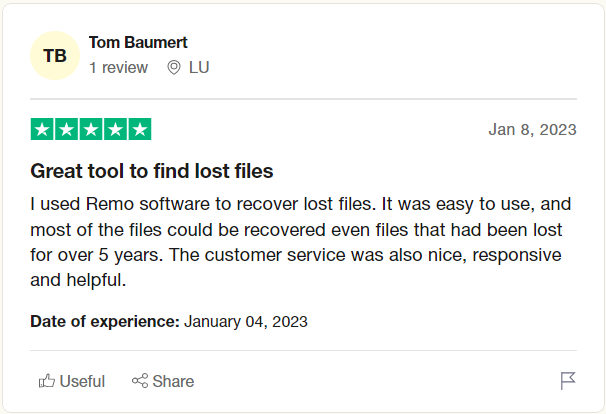
Source: Trustpilot
Remo File Recovery is a specialized data recovery software that is built to work when all other permanently deleted file recovery solutions have failed.
Remo is designed with powerful search algorithms that can recover files which were permanently deleted or are gone forever from any storage device and any Windows or Mac system.
Remo is a trusted tool endorsed by millions of happy users across the globe.
Download and try the tool now for free and find out what more Remo can do for you.
Remo is not only compatible with all versions of Windows OS, Remo can also recover permanently deleted files from Windows Server.
Here’s a simple 7-step process to perform Permanently Deleted File Recovery using Remo.
Step 1: Download the Remo File Recovery software on your Windows system.
Step 2: Launch the tool and select the drive from where you want to bring back permanently deleted files or folders, click on the Scan button to initiate the drive scanning process.
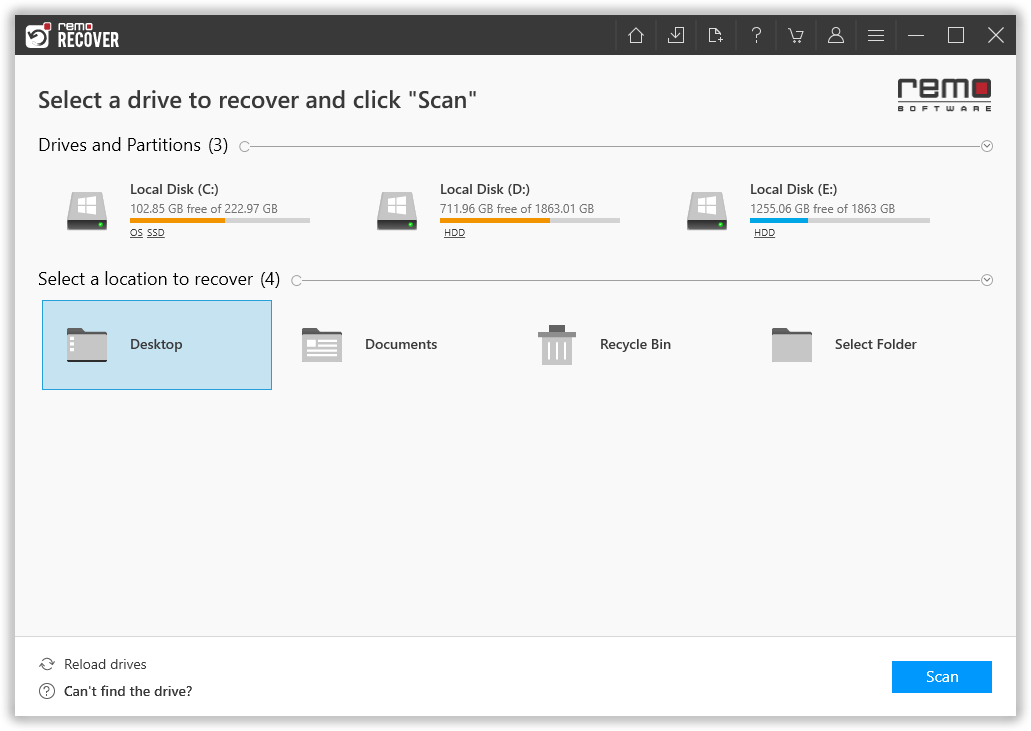
Step 3: While the scan is in progress. Use the Dynamic Recovery View option to look at the recovered files and save them without having to wait till the completion of the entire scanning process.
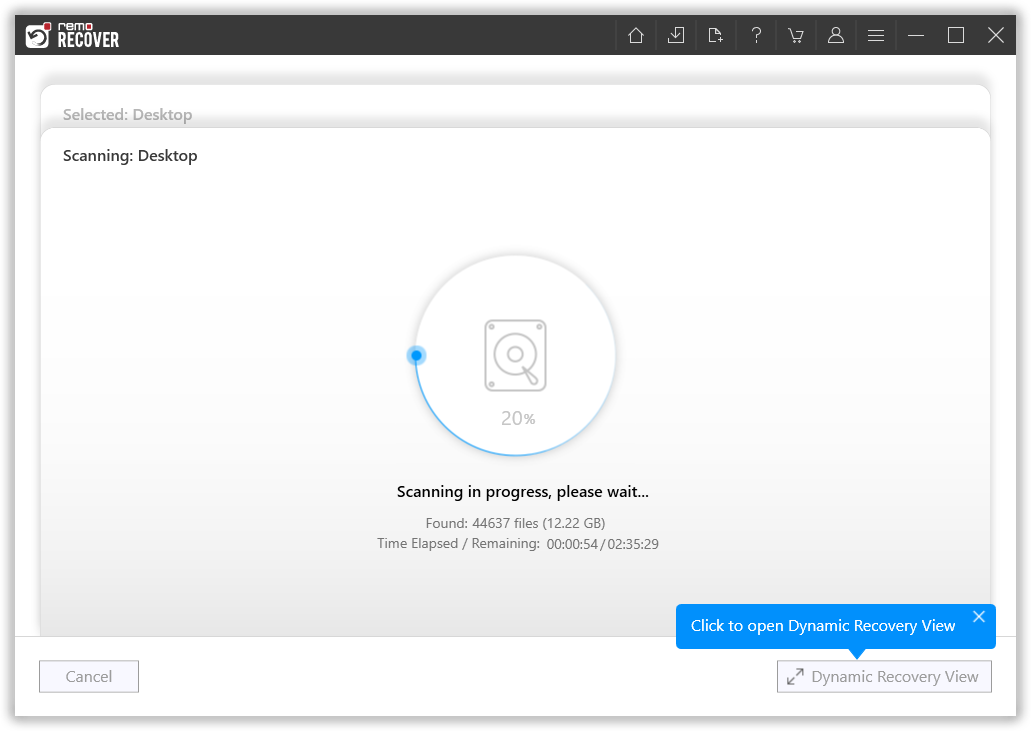
Step 4: Upon successful completion of the scan. Remo will display a list of files that the tool has recovered.
Step 5: Use of the Advanced Filter option to easily filter and find files that are important.
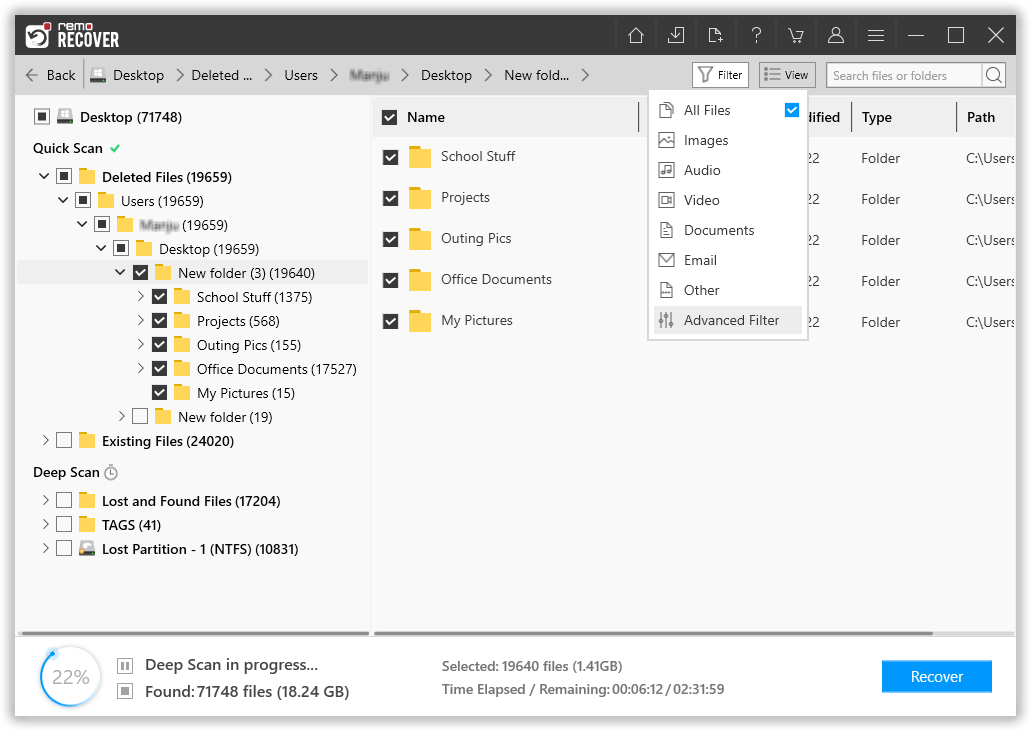
Step 6: Preview the recovered files by double clicking on them.

Step 7: When you are completely satisfied with the data recovery process. Select the files that you want to get back. Click on the Recover button and select a location where you would like to save the recovered files.
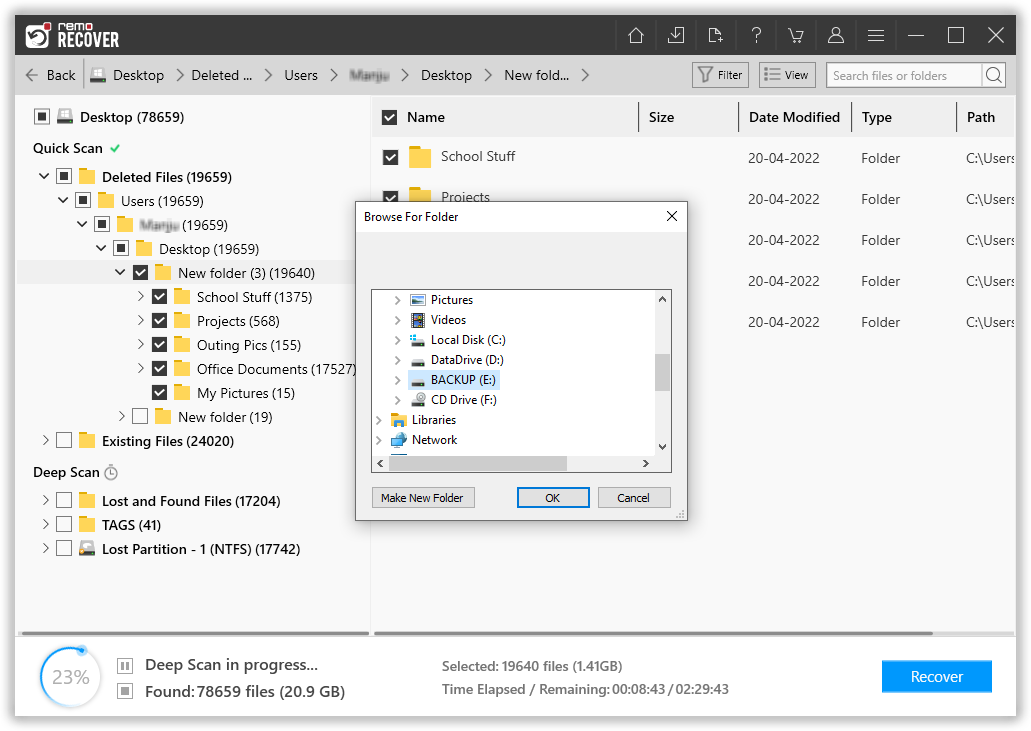
That’s it. You have now successfully recovered all of your files that were permanently deleted.
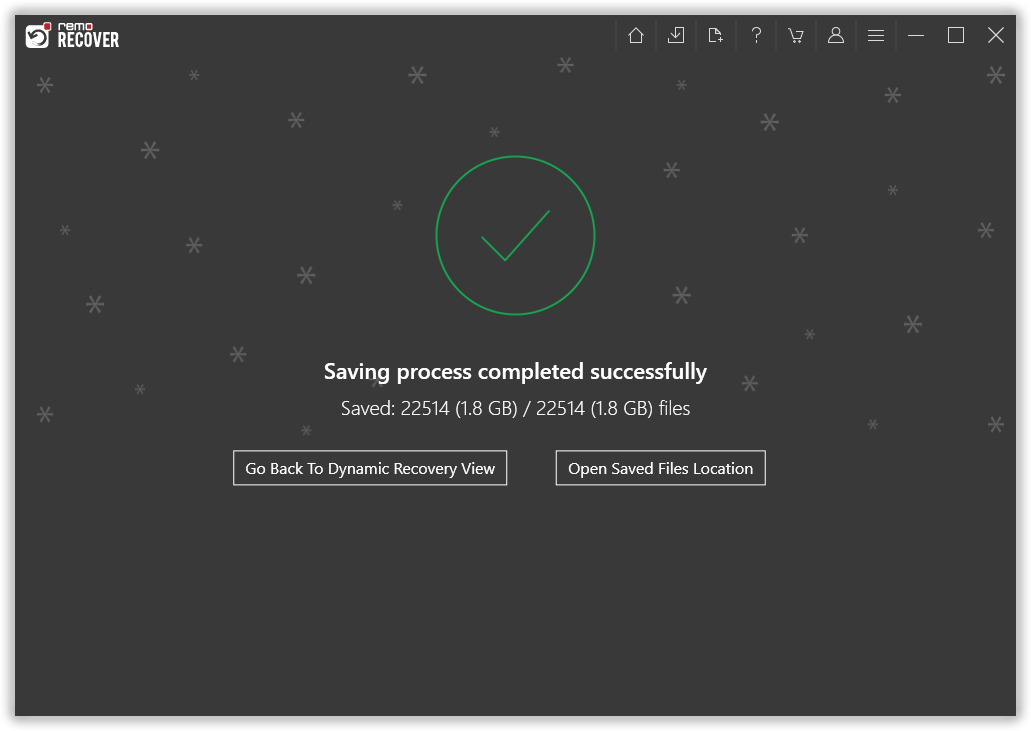
In addition to recovering more than 500 types of files, Remo can also recover User Folder as well as all restore deleted files and folders from the C Drive.
Here we end our discussion on recovering permanently deleted files on Windows, where we have explained all possible ways to pull back files that were deleted permanently from your Windows computer or laptop. Starting with restoring the copies of the original files from the external storage devices and Cloud. Then we explained to you how to get back permanently deleted files using for free using in-built Windows tools, such as Previous Versions, File History, and Microsoft Windows File Recovery tool. However, the reliability of those tools is not very promising. In such cases, we recommend you try the Remo File Recovery tool.
Frequently Asked Questions
Fortunately, the answer is no. But the catch is the deleted files are no longer available in your system and are not visible to the human eye. But they do reside on the internal hard drive of your Windows system. This is where specialized tools like Remo Recover come to your assistance.
Free methods to recover permanently deleted files include: restoring and using backup copies of original files and using free data recovery tools by Microsoft such as Previous versions, File History, and Windows File Recovery tool.
But those solutions also come with many drawbacks, which sometimes makes the permanently deleted file recovery process a bit demanding and sometimes impossible.
You can refer to our article to discover all the possible ways to recover files from Windows.
The answer is NO. When you delete any file or folder from your Windows system. They end up in the Recycle Bin folder till the end of time. But if you have permanently deleted those files, they are gone forever. The only way to bring them back is by using a professional data recovery tool like Remo.
Why Choose Remo?
100% safeSecure
100% SatisfactionGuarantee
10 Million+Downloads
Free TechSupport
Live Chat24/7 Support